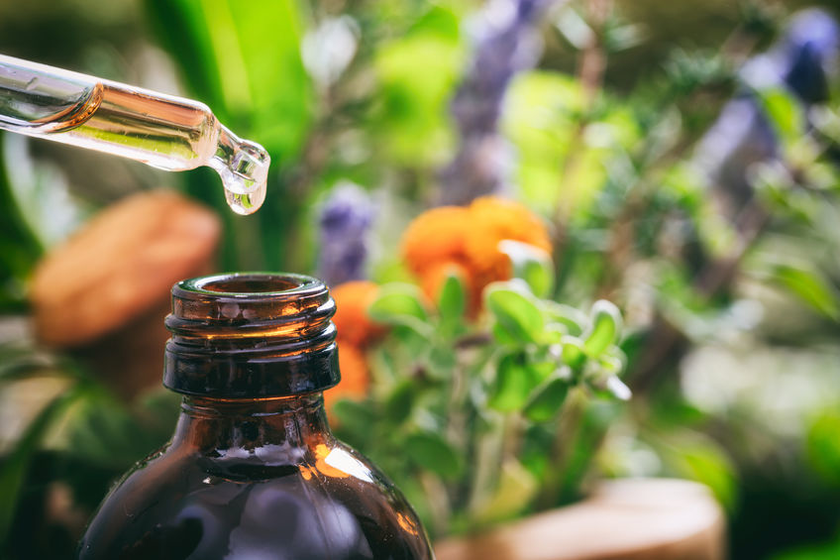
Essential oils have been used for centuries in a variety of ways. They’re known and used for their physical healing qualities, their therapeutic effects on the emotions and their literal cleansing abilities! Considering all aspects of life, essential oils can be used safely and effectively.
“I believe that for every illness or ailment known to man, that God has a plant out here that will heal it. We just need to keep discovering the properties for natural healing.”
― Vannoy Gentles Fite, Essential Oils for Healing: Over 400 All-Natural Recipes for Everyday Ailments
If you’ve read our previous article, Essential Oils: A Beginner’s Guide, you already know how to choose quality essential oils and how to use them safely and the best oils to have on hand. In today’s article, we’ll continue our tips on the many ways you can use essential oils every day and “recipes” for household use.
Ways to Use Essential Oils Around the House
There are many methods of enjoying all the healing (and just plain pleasing) aspects of essential oils. Here are many of them:
Direct Inhalation: You can apply 1 to 3 drops onto a cloth, cotton ball or towel and place it close to your face and breathe! Alternatively, you can just hold the bottle of oil close to your face and inhale.
Hot Water Vapor: Heat water, adding 1 to 3 drops of essential oil and inhale. Heat may reduce the therapeutic benefits of the oils.
Vaporizer/Humidifier: Drop oil in a vaporizer or humidifier to introduce it into the air. This method is most effective with cool mist versions. Ultrasonic vibration vaporizers are especially effective, providing a suspension of the oil in the air for longer periods of time.
Fan/Vent: Place oil source on or behind a fan or in a vent to introduce into the air.
Burner: You can find ceramic burners expressly for this purpose. Fill the top container halfway with water and add 8 to 10 drops essential oil. Light a tea light candle underneath. Remember that heat may degrade the therapeutic effects.
Room Spray: Use a small glass spray bottle to prevent essential oils from reacting with plastic. Fill an 8-ounce spray bottle three-quarters full of water and add 15 to 20 drops of essential oil.
Essential Oils for Pets: Essential oils not only benefit us, but our pets as well. Dogs, wolves and horses are known to forage for herbs and plants in the wild when they are ill. You’ve undoubtedly seen dogs eating grass to purge their system! Essential oils can also be used to calm your pet, keep fleas away or soothe itchy skin.
Do keep in mind that dogs and cats metabolize differently than we do and therefore cannot tolerate certain oils. Cats do not have the same liver functionality as our canine friends, therefore certain essential oils and plants can be especially toxic to them. There’s a lot to know about using essential oils on your pets! Here’s a wonderful article by Dr. Josh Axe that you can use as a guide.
Essential Oils Home & Beauty Recipes: Tillie’s Tips!
Hand Soap
Making your own hand soap with essential oils is economical and non-toxic, unlike store-bought hand soaps! Buy a foaming soap dispenser—or just reuse an empty one!
- 2 tablespoons liquid castile soap such as Dr. Bronner’s
- 10 to 15 drops essential oil (I like Thieves oil or a blend of citrus and peppermint.)
- 1/2 to 1 teaspoon liquid oil such as almond, avocado, grapeseed or olive (optional)
Put ingredients in the dispenser and add water to fill without going over the top!
All-Purpose Spray
Vinegar is a wonderful, cost-effective cleaner! I use white vinegar in many ways: to clean my floors, trashcans, counters and kitty litter box. You can add a few drops of peppermint or citrus essential oil to 1 cup of vinegar.
Here are two articles that will give you even more uses for vinegar (and some instances where you shouldn’t use it!).
28 Ways to Use Vinegar Around Your House
Sugar scrub
- ½ cup coconut oil
- ¼ cup sugar (I prefer white sugar. Brown sugar has a molasses smell.)
- 10 to 20 drops of essential oils
I personally enjoy using sandalwood oil alone. A blend of lavender with orange, lemon, or eucalyptus can be wonderfully relaxing, too.
Odor-Busting Formula
For fabrics with funky odors, I like to mix 10 to 20 drops of essential oils with 1 cup of baking soda. You can sprinkle this mixture on a carpet, let it set for 30 minutes and vacuum. You can also keep the mixture in a cup and leave it in your car. I have done this after fishing trips to help eliminate the fishy odor.
Cooking with Essential Oils
Keep in mind oils are concentrated and only a very small amount is required to achieve your desired result. Also, only ingest therapeutic-grade essential oils and avoid doing so while pregnant or lactating, or if you suffer from epilepsy, high blood pressure, have cancer, liver damage or other medical conditions.
I feel like I am forever running out of spices! When I need lemon, basil or rosemary for a meal and I am missing the fresh herb, I add a drop or two of essential oil to 1 tsp of olive oil, and then to the meal so that it’s not overpowering. This is really nice with fish. I prefer to add the oil at the end as essential oils can evaporate more quickly when exposed to high heat.
For beverages, I like to use the toothpick method. Dip a (clean) toothpick in the essential oil bottle and then swirl in your drink. For single serve items, this can be ideal. Think cinnamon or peppermint for smoothies, lemon for water or Thieves oil in tea or coffee.
We hope you found these essential oil tips helpful. If you want even more information, visit our past essential oil articles.
Nature’s Medicine: Essential Oils for Depression, Anxiety and Immune Health
Essential Oils Beginner’s Guide
Image Copyright: 123rf.com/gioiak2





